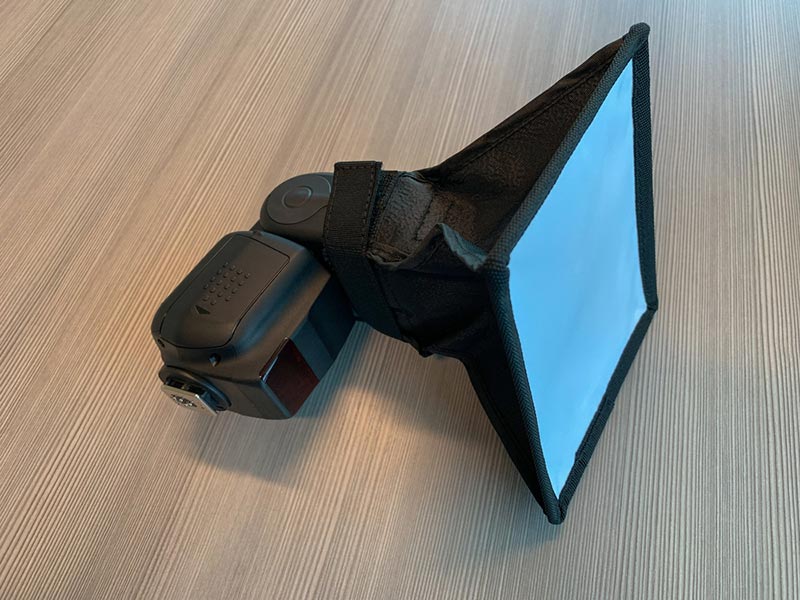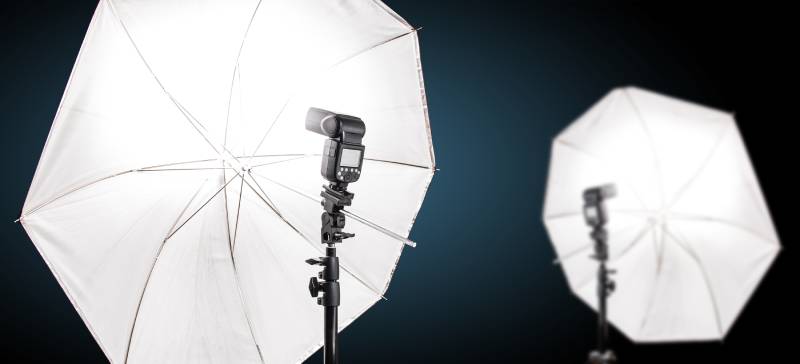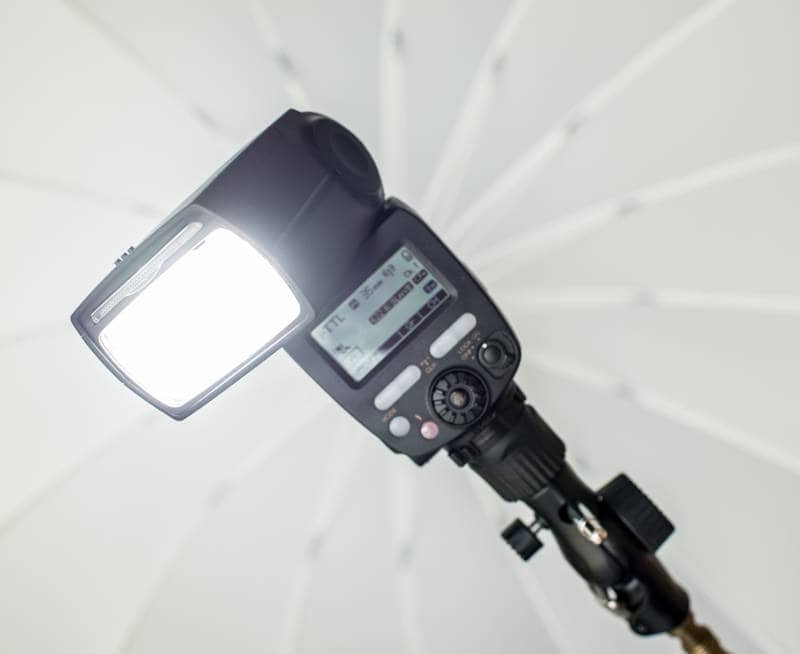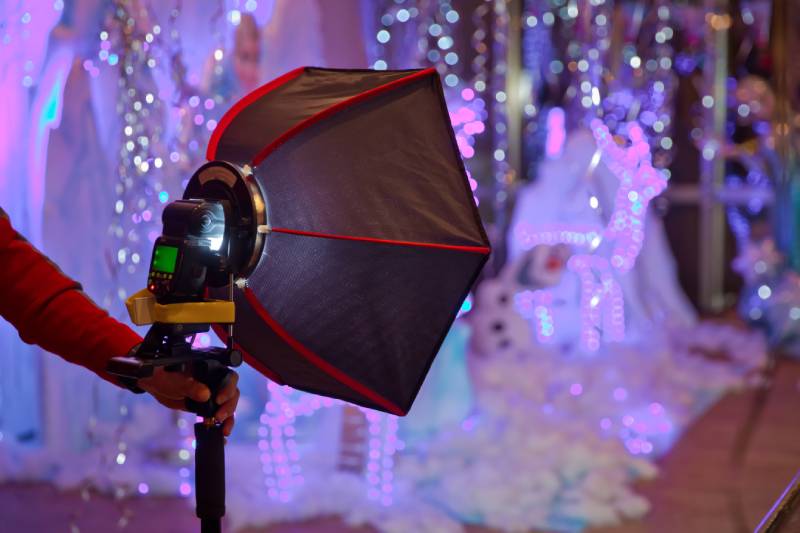What Is a Speedlight and How Does It Work?
Last Updated on

If you’re trying to learn about photography, chances are that you understand how important lighting is. Lighting your subject or setting is crucial to achieve the proper exposure and look you want, so it’s only natural that you would want to control the conditions. In that case, you have probably heard about the speedlight or ‘speedlite; but what exactly is a speedlight? How does it work? What is it used for? Do you need one?
We’ll answer these questions in just a moment!

How Does It Work?
A speedlight is a type of on-camera flash used to adjust the lighting of a subject or scene. It is a must-have for low-light situations where the exposure of your image would otherwise force you to compromise ISO, shutter speed (mostly this), or aperture. Speedlights are a somewhat tall piece of kit that can be connected directly by using a wired input (some are wireless) and onto your camera’s hot shoe mount to keep things steady.
Speedlights work by flashing temporarily so that a camera can gather its reflected light off of a surface. This can also be done by ‘bouncing’ the light off of a ceiling or wall to cut off the harsh highlights.

What Are the Different Types of Speedlights?
Through-The-Lens (TTL)
A ‘through-the-lens’ speedlight is essentially an automatic flash. Instead of setting it to a certain increment, the light changes its extremity by communicating with the camera itself so it can attain the best exposure level. TTL speedlights are particularly good for run-and-gun style photographers who need good results fast.
Manual
A manual flash is operated by the user for optimal customization and control. Manual speedlights function by adjusting fractional increments. Keep in mind that larger increments will produce more light. You can pretty much consider it the same as shutter speed, as that is what the light seeks to replace. Generally speaking, manual speedlights are far more affordable than automatic flashes. However, that doesn’t mean they are of worse quality, and they can be better for those who need to achieve a specific result.

Where Is It Used?
Speedlights are used in many different genres of photography, whether indoor or outdoor. Portraiture, interiors, wildlife, macro, and still life are prime examples of this. This is because the light can affect the area or subject effectively at a close distance. Landscape photography isn’t exactly the place for a flash because there is too much distance to be covered.
Advantages of Speedlights
Any additional lighting will be beneficial to your imaging flexibility, but speedlights have extra practicality due to their small size and camera integration when compared to other options. Plus, they are sold in practically every camera store at a reasonable price. Luckily, you can also use this piece of gear for diffusion, which we mentioned earlier.

Disadvantages of Speedlights
Despite their portability, the added size and weight of a speedlight can make a kit quite cumbersome. Additionally, they require batteries which can be a bit annoying to resupply. Another thing to note is that they don’t always work for all situations or may not be necessary at all. In fact, some places restrict the use of flashes to protect the artwork or for the safety of animals. They also aren’t beneficial for video, as that requires a constant light source.

Frequently Asked Questions (FAQs)
Do I Need a Speedlight for Wedding Photography?
Portraiture and event photography benefit a lot from the use of a speedlight. If you’ve ever seen a wedding photographer in action, it’s likely that they had a flash for their gig. Weddings are, in many cases, full of lights, so you may think that artificial lighting isn’t a huge deal. But it’s still best practice to bring one in case it’s needed, especially for indoor use.

Are There Accessories for Speedlights?
Yes! One of the best add-ons that you can purchase for an external flash is a diffuser. Some people use walls or ceilings to reflect light more subtly, but this is an unlikely case for outdoor use.

Final Thoughts
Speedlights are a versatile piece of gear that many photographers should consider using. They’re used for a myriad of situations and are easy to bring along for a photo shoot, making them a no-brainer for professionals and amateurs alike. All in all, it’s best to know if your subject or niche will require the use of a flash so you end up buying the right tools for the job.
Featured Image Credit: Rosamar, Shutterstock
Table of Contents
About the Author Robert Sparks
Robert’s obsession with all things optical started early in life, when his optician father would bring home prototypes for Robert to play with. Nowadays, Robert is dedicated to helping others find the right optics for their needs. His hobbies include astronomy, astrophysics, and model building. Originally from Newark, NJ, he resides in Santa Fe, New Mexico, where the nighttime skies are filled with glittering stars.
Related Articles:
What Is the Best Binocular Magnification for Hunting? Optical Features Explained
How to Clean a Refractor Telescope: Step-by-Step Guide
How to Clean a Telescope Eyepiece: Step-by-Step Guide
How to Clean a Rifle Scope: 8 Expert Tips
Monocular vs Telescope: Differences Explained (With Pictures)
What Is a Monocular Used For? 8 Common Functions
How to Clean a Telescope Mirror: 8 Expert Tips
Brightfield vs Phase Contrast Microscopy: The Differences Explained
